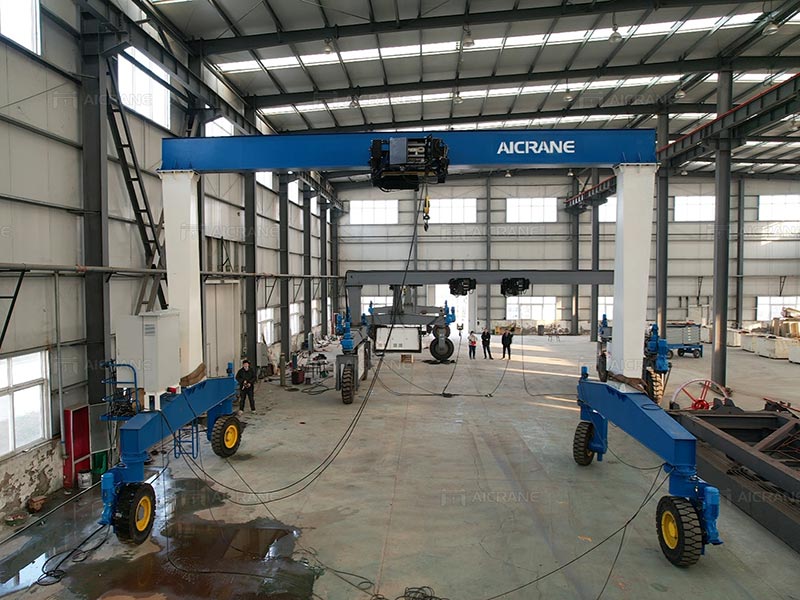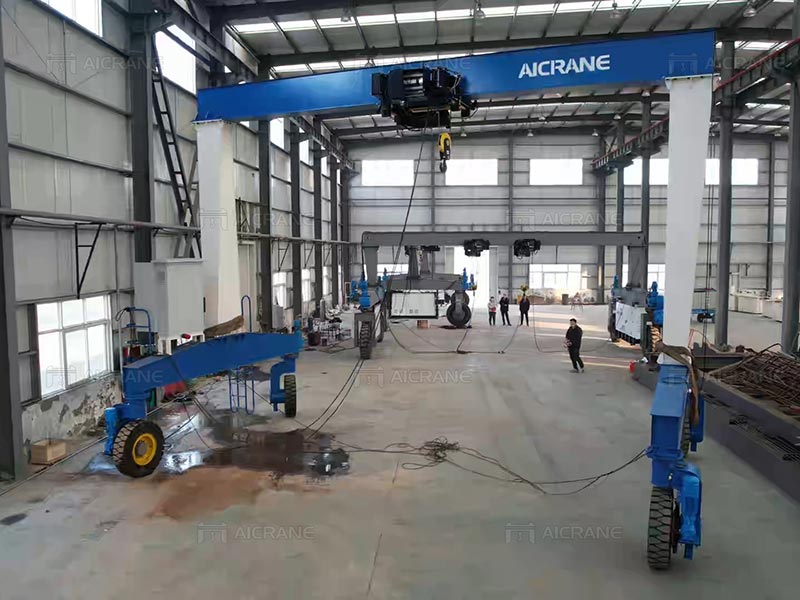When it comes to material handling in various industries, there are multiple options available to choose from. From overhead cranes to mobile cranes, and even conventional gantry cranes, the options can be overwhelming. However, one type of crane that stands out for its versatility and efficiency is the Rubber-Tired Gantry Crane (RTGC).

RTGCs vs. Overhead Cranes
One of the most significant differences between RTGCs and overhead cranes lies in their design and construction. Overhead cranes are typically suspended from the ceiling and use a trolley to move the load horizontally, while RTGCs are mounted on rubber-tired wheels and use a gantry to move the load vertically. This difference in design means that RTGCs have more mobility and can be used in a wider range of applications.
When it comes to capacity and reach, RTGCs(gruas portico sobre ruedas) can handle heavier loads than overhead cranes and can reach higher heights. However, overhead cranes have a longer reach, making them more suitable for larger facilities.
Cost and maintenance are also factors to consider when comparing RTGCs to overhead cranes. While RTGCs can be more expensive to purchase, they are generally cheaper to maintain in the long run and have a longer lifespan.

RTGCs vs. Mobile Cranes
When comparing RTGCs to mobile cranes, the most significant advantage of RTGCs is their portability and versatility. RTGCs can be moved from one location to another and can handle a wide range of loads, making them ideal for use in multiple industries.
Ease of use is another advantage of RTGCs. Mobile cranes require a significant amount of setup time, and their use may also require additional certifications, while RTGCs can be used with minimal training and preparation.
Safety features are an essential consideration when comparing RTGCs to mobile cranes. RTGCs(grúa RTG) have several safety features built-in, such as load limiters, emergency brakes, and more, making them a safer option for material handling.
RTGCs vs. Conventional Gantry Cranes
In terms of operational efficiency, RTGCs are significantly faster and more efficient than conventional gantry cranes. This is due to the fact that RTGCs can move more quickly and smoothly, allowing for faster load handling.
Another advantage of RTGCs is their ability to save space. Conventional gantry cranes require a significant amount of space for both the crane itself and for the load it is handling, while RTGCs are more compact and take up less space.
Load handling capabilities are another area where RTGCs stand out when compared to conventional gantry cranes. RTGCs can handle a wider range of loads and can reach higher heights, making them a more versatile option for material handling browse around here: https://aicrane.cl/grua-portico-barcos/.
It isn’t difficult to see how versatile and efficient RTGCs are for material handling, offering several advantages over other types of cranes. Whether you’re looking for a crane that can handle a wide range of loads, has a compact design, or is easy to use, RTGCs should rank high on your list. Remember to spend enough time comparing different models and specifications to find one that best fits your unique applications.
